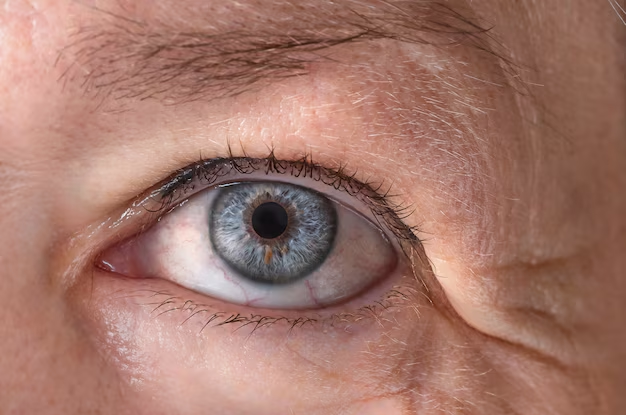Exploring Cataracts: Unveiling the Causes Behind Cloudy Vision
Have you ever noticed your vision becoming a bit blurry, as if you're peering through a foggy window? This might be an early sign of cataracts—a common eye condition that often starts subtly but can significantly impact daily life. Understanding what causes cataracts is essential in managing and potentially slowing their progression. This article aims to demystify the causes of cataracts and provide valuable insights into this condition that affects millions worldwide.
🧐 What Are Cataracts?
Cataracts occur when the lens of the eye becomes cloudy, leading to decreased vision clarity. The lens, normally transparent, acts like a camera lens, focusing light onto the retina to produce clear images. Over time, proteins in the lens can clump together, clouding the lens and obscuring vision. While cataracts are most commonly associated with aging, several factors contribute to their development.
🤔 Understanding the Causes of Cataracts
1. Age: The Primary Culprit
Aging is the most prevalent risk factor for cataracts. As people age, the proteins in the lens naturally begin to break down and clump together. By age 80, a significant number of people experience some form of cataracts. This gradual change is a natural part of aging, affecting everyone to varying degrees.
2. Genetic Influences
Heredity can play a role in cataract development. Some individuals inherit a genetic predisposition to develop cataracts earlier or more severely than others. Families with a history of cataracts may notice a similar pattern across generations, warranting earlier or more frequent eye examinations.
3. Impact of Health Conditions
Certain health issues can heighten cataract risks:
Diabetes: Individuals with diabetes are more susceptible to cataract formation. High blood sugar levels can alter lens structure, accelerating clouding.
Hypertension: Persistent high blood pressure may impact eye health over time, contributing to cataract development.
Obesity: Excess body weight can exacerbate health problems linked to cataracts.
4. Lifestyle Choices and Environmental Factors
Smoking: Current and former smokers face increased cataract risks, likely due to oxidative stress and toxins from cigarettes. Quitting smoking can reduce this risk.
Excessive Alcohol Consumption: Like smoking, heavy alcohol use introduces oxidative stress, affecting eye health.
UV Exposure: Prolonged exposure to ultraviolet (UV) light can hasten cataracts. Wearing sunglasses with UV protection can mitigate this risk.
5. Nutritional Aspects
A diet low in antioxidants might contribute to cataracts. Antioxidants combat oxidative stress, a key factor in cataract formation. Ensuring a diet rich in fruits, vegetables, and nutrients can support eye health and potentially delay cataract onset.
6. Trauma-Induced Cataracts
Injuries to the eye, whether from accidents or surgeries, can increase cataract occurrence. Trauma can disrupt the lens structure, leading to quicker clouding.
7. Certain Medications
Chronic use of corticosteroids or certain other medications is linked with cataract formation. Discussing these risks with a healthcare provider is advisable if you are on long-term medication.
🌟 Key Factors and Tips for Maintaining Healthy Vision
To help visualize and manage these key factors, consider this concise summary:
| Factor | Impact on Cataract Risk | Tips for Mitigation |
|---|---|---|
| Age | Natural increase with age | Regular eye check-ups as you age |
| Genetics | Family history can impact risk | Inform your eye doctor about family history |
| Health Conditions | Diabetics and hypertensives at higher risk | Manage conditions with regular medical guidance |
| Lifestyle Choices | Smoking and drinking increase risks | Quit smoking, limit alcohol, and protect eyes from UV |
| Nutrition | Low in antioxidants heightens risk | Incorporate fruits and veggies rich in antioxidants |
| Injury | Trauma accelerates cataract formation | Use protective eyewear during hazardous activities |
| Medications | Certain drugs linked to cataracts | Consult healthcare provider about medication alternatives |
✨ Bonus Tip: Incorporate an annual vision test into your routine. Regular evaluations help catch cataracts early, providing more management options.
🏖️ Living with Cataracts: Adapting and Thriving
Living with cataracts doesn't mean surrendering to vision loss. Here are some valuable strategies for maintaining quality of life:
Enhancing Daily Life
Improving Lighting: Boost ambient light in living spaces to reduce strain and improve clarity.
Vision Aids: Magnifying lenses or brighter screens can help when reading or using devices.
Contrast Sensitivity: Emphasize contrast in home decor and personal items to make navigation easier.
Staying Engaged
Social and mental engagement is critical. Participating in activities like book clubs or craft sessions—safely adopting larger print or improved lighting—keeps the mind active.
Planning for the Future
Considering cataract surgery, should it become necessary, can be empowering. Surgery is often successful in restoring vision, and discussing this option with an eye care professional can provide clarity and reassurance.
A Glimpse into Cataract Prevention Research
Ongoing research continues to shed light on cataracts:
Innovative Technologies: Eye research is exploring materials and treatments that might prevent protein clumping in the lens.
Lifestyle Studies: Studies delve into how lifestyle adjustments can delay or diminish cataract risks.
Health Interventions: New insights are constantly emerging on how to manage health conditions affecting eye health.
Closing Thoughts
Cataracts, while common, are not an insurmountable challenge. Understanding their causes—ranging from biological aging and genetics to lifestyle habits—gives individuals the knowledge to manage and potentially reduce risks. Taking proactive steps, such as adjusting lifestyle habits, ensuring a nutrient-rich diet, and scheduling regular eye exams, can collectively support clearer vision and a better quality of life.
Empowerment stems from knowledge. Understanding cataracts is the first step towards preserving your visual clarity and living life to its fullest, irrespective of age. Stay informed, proactive, and ready to adapt, ensuring that your vision remains as bright as your outlook on life. 👁️✨
